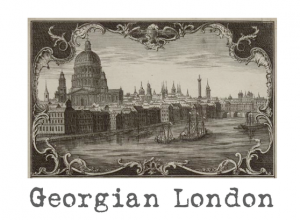Holly Tucker's Blog, page 72
January 9, 2013
The Mummy returns
By Helen King
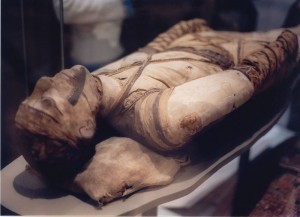 Have you seen the Egyptian mummies in the British Museum? Even if you’ve never been to London, you may have caught the travelling exhibition, ‘Mummy: The Inside Story’, which focuses on the priest Nesperennub, and has so far been seen by nearly 2 million people. Mummies are endlessly fascinating. They give nightmares to generations of schoolchildren who go to the British Museum on organised trips, and go home worrying about having hooks poked up their noses to get their brains out. The remain a staple of horror movies for those who left school a long time ago. CT scanning has given them a whole new lease of – er – life, enabling us to find out not only what caused their deaths, but how they lived.
Have you seen the Egyptian mummies in the British Museum? Even if you’ve never been to London, you may have caught the travelling exhibition, ‘Mummy: The Inside Story’, which focuses on the priest Nesperennub, and has so far been seen by nearly 2 million people. Mummies are endlessly fascinating. They give nightmares to generations of schoolchildren who go to the British Museum on organised trips, and go home worrying about having hooks poked up their noses to get their brains out. The remain a staple of horror movies for those who left school a long time ago. CT scanning has given them a whole new lease of – er – life, enabling us to find out not only what caused their deaths, but how they lived.
I was recently re-reading the eighteenth-century author Philip Thicknesse”s attack on man-midwifery; the claim by men that they could deliver babies more efficiently than women midwives ever could. Thicknesse, known as ‘Dr Viper’ from his sharp tongue, is probably the author of a 1764 book, Man-midwifery Analysed. In it, he takes up the comments of William Smellie – enthusiastic and innovative man-midwife, and teacher of other men-midwives – that in the primitive past, men were not midwives, and this was somehow a Bad Thing. Smellie wrote ‘It is natural to suppose, that, while the simplicity of the early ages remained, women would have recourse to none but persons of their own sex in diseases peculiar to it; accordingly, we find that in Egypt midwifery was practised by women’. What Smellie was suggesting was that early societies had ridiculous ideas of modesty that, fortunately, have ‘now’ been replaced by a modern and rational approach. In his lectures given in the 1740s, he always stressed to his students the ‘barbarism’ of the ancient world – with the possible exception of his hero, Hippocrates.
Thicknesse took issue with this denigration of the Egyptian, and other ancient, past. He said that there can’t have been much wrong with Egyptian medicine – after all, they ‘knew how to preserve dead bodies for three thousand years, so as to keep their living form’. In Egypt, he suggested, the lack of all the instruments of the ‘modern’ man-midwife – ‘hooks and crotchets, pincers, boring scissors, tapes and filleting’ – should be seen as a blessing, not a curse.
And then he writes, tongue firmly in cheek: ‘I suppose all the Egyptian mummies brought over here, besides those which are in the Museum, to be the bodies of poor Egyptian ladies, who died in child-bed; and that the hieroglyphics on their sycamore coffins, could they be deciphered, would appear to be, the lamentations of their surviving husbands, that no art could be discovered whereby nature might be corrected, and made more perfect’. Here, in addition to an attack on Smellie’s suggestion that there must have been a high death rate in childbirth if there were no men-midwives to help, we get a sense of the earliest mummy craze. The very first mummies in the British Museum were only acquired in 1756, when they were bequeathed to the collection by William Lethieullier, who had travelled to Egypt in the early 1720s.
And only in the 1820s, after the discovery of the Rosetta Stone, were those hieroglyphs finally understood.
Reading:
On Smellie, Thicknesse and man-midwifery: Helen King, Midwifery, Obstetrics and the Rise of Gynaecology (2007)
On collecting: Kim Sloan, Enlightenment. Discovering the World in the Eighteenth Century (2003)
- and if you want to know about real women who were mummified, click here, and if you want to know about the hazards of telling if a mummy is male or female, click here!
Mr. President, a Visitor Is Here to See You
by Jack El-Hai, Wonders & Marvels contributor
Thousands of people will soon arrive in Washington, D.C., for President Obama’s inauguration. Who are the people who visit the nation’s capital to see the Chief Executive? For the past 70 years, researchers have wondered about the psychiatric makeup of the President’s visitors — especially those visitors who are psychotic.

Three studies in separate decades have scrutinized psychotic visitors to the White House.
From the 1940s
The first study, published in 1943 by Jay L. Hoffman, a psychiatrist at St. Elizabeths Hospital in Washington, examined a group of 53 St. Elizabeths patients, about half of whom had been committed to psychiatric treatment years earlier after showing strange behavior and being turned away at the White House. (The remainder had been hospitalized after their bizarre conduct at other government offices in Washington.) Many had hoped to complain to the President about injustices they believed they experienced in finding employment, being previously confined to mental hospitals, and collecting financial payments they thought they deserved. Some wanted to give advice on matters of national importance. “Two claimed that they had been elected to the office of the President of the United States and came to Washington to be sworn in,” Hoffman wrote.
Hoffman sought patterns and common traits among the psychotic patients and found disproportionate numbers of paranoid schizophrenics, foreign-born people, and unmarried men among them. “Frequent references were made in the records indicating frustration in sex life and poverty of sex-experience,” Hoffman observed. “Delusions and hallucinations referring prominently to sex functions and sex organs were common.”
He wrote that most of these patients notably lacked insight, although they often were pleasant and polite despite their delusions. Few recovered their mental health. Hoffman concluded that members of this group were “a pitiful lot” whose presidential visits were but a single sign of their illness that left them isolated, unsuccessful, and frustrated.
From the 1960s
A 1965 study by Joseph A. Sebastiani and James L. Foy, psychiatrists with the University of Cincinnati and Georgetown University respectively, revisited the phenomenon of psychotic visitors to the White House. They went through the records of 38 patients referred for psychiatric treatment after seeking an audience with the President during the early 1960s. The patients ranged in age from teenagers to an 86-year-old man. Among them were five people in pursuit of property or sums of money, three presumptive presidents, two on “top secret” missions, one self-declared presidential wife, and a woman who claimed to be President Eisenhower’s mother. The psychiatrists characterized the group as “profoundly delusional individuals seeking an exclusive personal encounter with the President and an extraordinary association with the complexly symbolic office of the Presidency.” Nearly all had received diagnoses as paranoid schizophrenics.
The researchers raised the possibility that any similarities among the patients may result from profiles of White House visitors suitable for psychiatric referral that the Secret Service had developed. Sebastiani and Foy concluded that few of the patients had presented actual physical threats to the President.
From the 1980s
Twenty years later, a research team from St. Elizabeths Hospital and the National Institutes of Mental Health took yet another look at psychotic White House visitors. They reviewed the cases of 328 people sent between 1970 and 1974 to St. Elizabeths after problematic attempts to see the President. Like the previous studies, their research showed the patients to be predominantly white, male, unmarried, and paranoid schizophrenic.
Unlike earlier researchers, however, this team found few foreign-born among the patients, and they discovered that 22 percent of the group had made written or verbal threats against the President and other government officials. These psychotic visitors did not view the Chief Executive and his minions as paternalistically as had their counterparts of earlier decades. One of the 328, in fact, went on to murder a Secret Service agent, another attacked a security officer at the Department of the Treasury, and a third assaulted a person she had mistaken for the First Lady.
If you are attending the presidential inauguration this month, enjoy yourself. Just steer clear of all who say they’re seekers of lost fortunes or pretenders to the Oval Office.
Sources:
Hoffman, J.L. Psychotic visitors to government offices in the national capital. Am J Psychiatry 99:571-575, 1943
Sebastiani, J.A., Foy, J.L. Psychotic visitors to the White House. Am J Psychiatry 122:679-686, 1965
Shore, David, Filson, C. Richard, Davis, Ted S., Olivos, Guillermo, DeLisi, Lynn, Wyatt, Richard Jed. White house cases: psychiatric patients and the Secret Service. Am J Psychiatry, 142:308-312, 1985
January 6, 2013
Sir Arthur Conan Doyle and the Sea Monster
by Adrienne Mayor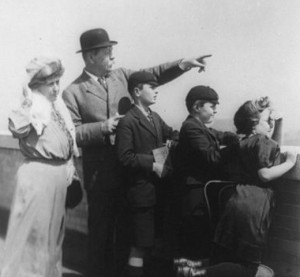 (Wonders & Marvels contributor)
(Wonders & Marvels contributor)
Sea monster sightings have been reported in the Mediterranean since antiquity. Aristotle (fourth century BC) remarked that experienced Greek sailors occasionally encountered unknown sea creatures. The monsters fell into two types: some resembled massive beams of black wood; others were like giant red shields with many fins. A multi-finned monster was observed in modern times by officers of the British royal yacht Osbourne in 1877. Twenty years later another British crew in the Mediterranean saw a huge sea “centipede,” 150 feet long with “an immense number of fins.” In 1742, it was reported that giant eels wrecked tuna fishermen’s nets; similar reports appeared again in 1907, 1924, and 1958.
The Greek travel writer Pausanias, writing in the second century AD, claimed that so many sea monsters lurked in the Adriatic Sea that “their smell hung thick in the air.” Unfortunately Pausanias did not describe the odor. The nineteenth-century classicist J. G. Frazer (author of The Golden Bough) was intrigued by Pausanias’s comment. Frazer sailed the Adriatic several times but he never caught a whiff of anything untoward.
The Roman natural historian Pliny the Elder described another type of sea serpent, said to be about 30 feet long. These “dragons” swam with their heads raised up like periscopes, in the classic Loch Ness Monster pose. In the late 1890s, a Mediterranean ship’s log noted that a pair of sea creatures whose “heads were like greyhounds without ears” kept pace with the ship sailing at about 8 knots. In 1912, the crew of the steamer Queen Eleanor observed a 25 foot long mottled, eel-like creature with two “humps or coils” swimming along at the same speed as their ship. Another ship’s log of 1924 reported a 100-foot serpentine animal with raised head moving with “vertical undulations in the waves.” In 1916, Captain Eduoard Plessis, sailing west of Thasos (northern Aegean), was startled to see what looked like a periscope projecting 6 feet out of the water, moving swiftly, about 15 knots. Plessis sounded the submarine warning even though no sub of his day could move that fast.
Sir Arthur Conan Doyle maintained a keen interest in prehistoric animals and paranormal events. In 1928, the creator of the unflappable detective Sherlock Holmes and his wife took a sea voyage to the island of Aegina. Standing on the deck of a steamer, they were gazing at the ancient Temple of Poseidon, god of the sea, on Cape Sounion. Suddenly they were distracted by something swimming parallel to the ship. Conan Doyle recalled that “the curious creature had a long neck and large flippers. I believe, as did my wife, that it was a young plesiosaurus.” Plesiosaurs were marine reptiles that went extinct along with dinosaurs 65 million years ago. Their shape strongly resembles the reported forms of typical sea monsters in the popular imagination, such as Nessie of Loch Ness. Perhaps this incident inspired Conan Doyle to write his story The Lost World, in which extinct creatures are brought back alive to London.
About the author: Adrienne Mayor is a Research Scholar in Classics and History of Science, Stanford University. She is the author of “The First Fossil Hunters: Dinosaurs, Mammoths, and Myths in Greek and Roman Times” (2000, 2011); and “The Poison King: The Life and Legend of Mithradates, Rome’s Deadliest Enemy,” a nonfiction finalist for the National Book Award.
December 30, 2012
Mastermind of a Ten-Year-Old – How does one explain the child prodigy Mozart?
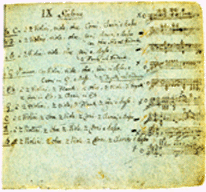
Leopold’s Catalogue of his small son’s work
At the age of ten he was catching flies, making up silly songs for his music teacher father, performing before kings, stealing his older sister’s diary, and composing symphonies. He was expert on violin and piano.
What made the boy Mozart such a phenomenal prodigy as well as such a human kid?
To quote from Wikipedia, “Psychology professor Dr. Larry Vandervert in his studies of working memory and the cerebellum produce creative argues that when a child is confronted with a challenging new situation, visual-spatial working memory and speech-related and other notational system-related working memory are decomposed and re-composed (fractionated) by the cerebellum and then blended in the cerebral cortex in an attempt to deal with the new situation. In child prodigies, Vandervert believes this blending process is accelerated due to their unique emotional sensitivities…”
This does not entirely explain Mozart’s profound, delightful humanity, his humor, his depth. But then genius at any age is not explicable.
It began very young with Wolfgang Amadé Mozart. When he was three years old he began to pick out thirds on the clavier, when he was four he learned a minuet in half an hour, when five began to compose on a paper full of ink blotches. His father cried over it. Friends and neighbors were astonished. If left to himself, he would have played the clavier all night. Music was play for him, a delight; he was never forced. Neither did he ever go to school; his father taught him everything from harmony to mathematics. He loved his father Leopold who was a respected violin teacher, composer, and musical employee of the Salzburg Archbishop. Before sleeping each night, Wolfgang used to stand on a chair and kiss Leopold’s nose.

Mozart about the age of eight by Jean Baptise Greuze
By the time the young Mozart was ten his parents had taken him and his older pianist sister Nannerl on a three-year tour, performing in the courts, theaters, private homes, inns and monasteries of Europe. They lived out of trunks and prayed for their luggage to arrive safely. Travel was difficult. Food was excellent or dreadful. Leather curtains on carriages did not keep out the rain and they were damp for days on end. Snow fell at the worse time. Likely they carried some saintly relics with them, being devout Catholics.
Mozart was little and thin and quick with a great deal of fair hair and large eyes; everything was of passionate interest to him. He was a sweet natured child, always wanting music and music, taking all of it in as they traveled, listening, learning from all he heard, and remembering everything. When he wasn’t climbing organ lofts on his short legs to play to the amazement of others or making up variations on a tune for the clavier, he created games and worlds. But by the age of seven was the principle family breadwinner.
“He had only one fault,” his older sister Nannerl remembered years later, “in that he was too kind and trusting.”
A musician reported: “This marvelous child has hardly grown but has made prodigious progress in music…he has composed symphonies for full orchestra which have been played and universally applauded here. But what is beyond comprehension is his profound grasp of harmony, and its most recondite progressions that he possesses to a supreme degree…to say that many Kappelmeisters who have attained the peak of their art will die without knowing what this boy knows.”

Stephanie Cowell’s novel about Mozart’s young courtship days
At the age of ten he returned to Salzburg. The new Archbishop who had heard many tales of the boy’s abilities, commissioned him to compose a sacred sung drama for the Salzburg Cathedral. Mozart’s creation turned into a score of 201 pages in his hand which is preserved today in the Royal Library of Windsor Castle. It is called Die Schuldigkeit des ersten Gebotes (K 35).By then he was eleven. Within a few years before fifteen the true depth of his genius would begin to emerge.
If he had died at ten, he might have been a remarkable footnote in musical history but he did not. He went on to the fullest imaginable maturity stopped only by death just before his 36th birthday. Who can truly explain what his father Leopold called “this miracle of nature which God allowed to be born in Salzburg?”
____________________________
About the author: Historical novelist Stephanie Cowell is the author of Nicholas Cooke, The Physician of London, The Players: a novel of the young Shakespeare, Marrying Mozart and Claude & Camille: a novel of Monet. She is the recipient of the American Book Award. Her work has been translated into nine languages. Her website is http://www.stephaniecowell.com
December 22, 2012
Who’s Responsible for Free Will?
By Riley Zeller-Townson (Atlanta Science Tavern Contributor)

Dilbert comic on the Libet Experiment (click for the original).
Neuroethics is an interdisciplinary field that attempts to understand the ethical implications of neuroscience research. And within Neuroethics, “Free will” is a battleground. About 30 years ago, neuroscientist Benjamin Libet led a study where the researchers were able to predict when human volunteers would press a button – a fraction of a second before the participants themselves realized they were going to do so. And despite recent suggestions that the scientific method is breaking down, there is an entire cottage industry of scientists replicating Libet’s result and finding more and more effective ways to predict what you are going to be “freely” thinking.
The implications are pretty tremendous – if my conscious mind is just observing a decisions that have already been made, and not participating in those decisions, how is that decision mine? How can I have free will if I am merely watching something else decide? And beyond being a purely academic conundrum, “free will” matters: it’s so fundamental to the way we think about our actions that several studies have shown the disturbing trend of people becoming more selfish and deceitful when they are shown evidence that free will is an illusion.
However, it’s hard to argue that free will is (or isn’t) an illusion, unless you know exactly what “free will” is in the first place. But with so many variants on free will floating around, how do you choose a “correct” definition? Does “free will” mean free from the laws of physics (metaphysical libertarianism)? Free from control by an omnipotent God? Free from mental disease, free from peer pressure, free from our own emotions? And what, exactly, is a “will?” Does it need to be “conscious?” With so many questions surrounding the phrase, it’s easy to see how such a fundamental concept as “free will” could be so hotly debated.
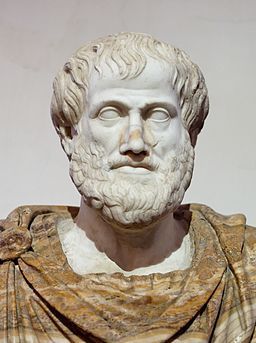
Did Aristotle have a notion of free will?
One tempting approach would be to just give the definition of the phrase to whoever coined it. However, the origin of “free will,” (or rather, the origin of the notion of “free will”) itself is also under debate. What is clear is that people have been talking about free will for over a millennium, but less than three millennia. Probably. In the early 20th century it was common to presume that folks have always had a notion of free will, an example being in 1923 when W.D. Ross confidently asserted that “Aristotle shared the plain man’s belief in free will.” This was despite Ross’s admission, two pages later, that Aristotle “did not examine the problem very thoroughly, and did not express himself with perfect consistency.” Later scholars took this lack of clear discussion to conclude that Aristotle lacked a notion of will, free or otherwise, altogether.
In1974 Albrecht Dihle argued that St. Augustine, in the 4th century AD, was the first person to put together our “Western notion” of free will. St. Augustine came to an (arguably libertarian) notion of free will as a way to solve the problem of evil: how could a benevolent and omnipotent God allow for a world with evil? Answer: humans are responsible for evil due to their free will (which got tainted when Adam and Eve consumed a particular fruit). Augustine describes this “free will” as a first cause, with no causes before it, meaning God gets none of the blame and gets to remain omnipotent. As St. Augustine generally held that “free decision of the will” required the ability to choose between two different courses of action, he would conceivably look at prediction studies like Libet’s as evidence against humans having “free will.” (After he got over the shock of learning about EEG. And Freud.)
However, if we fast forward to 1997, we find Michael Frede arguing that Dihle was being too restrictive in his definition of “free will,” and that St. Augustine got his idea about what “free will” was from the stoics. And last year Karen Neilsen published an article where she argues that Aristotle (HIM again!) actually developed a notion of will prior to Epictetus, making the point that Frede translates the Greek “prohairesis” as “will” for Epictetus and as “decision” for Aristotle (although Neilsen makes no comment on the ‘free’ aspect). So to understand where ‘will’ came from, we are looking at shifting definitions in ancient Greek. AAGH!
The lesson here is that this concept didn’t emerge suddenly out of the history of the west. “Free will,” whatever it is, was a gradual development over thousands of years, with input from several schools of classic Greek thought, as well as Jewish and Christian traditions. Perhaps then, instead of thinking of “free will” as a single well-defined idea, it should be thought of as an entire lineage of ideas. If this is the case, neuroscientists, science writers, and the public at large need to be very cautious when asserting that “free will is an illusion” is a scientifically valid hypothesis. If neuroscience wants to make points on “free will,” it needs to be both more specific as to what variant of “free will” it refers to, and more broad in the variants of “free will” it entertains.
Riley Zeller-Townson is a PhD student in Biomedical Engineering at the Georgia Institute of Technology in Steve Potter’s Neurolab. His research interests include neural computation, applications of neuroscience to artificial intelligence, and electrophysiology tools. Riley is also a member of the art-science collaboration Neurotica, as well as a Neuroethics Scholar at Emory University and a contributor to their Neuroethics Blog.
December 18, 2012
Tipu’s Tiger
By Pamela Toler (Wonders and Marvels Contributor)

Victoria and Albert Museum
“Tipu’s Tiger” is one of the most popular exhibits at the Victoria and Albert Museum. For generations, British school children and American tourists have lined up to watch the large mechanical tiger maul a fallen British gentleman. Today the toy is too fragile to operate, but once upon a time the tiger roared and its victim screamed when the mechanical device was activated.
Tipu’s Tiger is a fascinating example of eighteenth century clockwork, designed to appeal to the ghoulish eight year old that lurks inside each of us. But that’s not the main reason it occupies prime space at the V & A. The gruesome mechanical toy belonged to Tipu Sultan, the self-proclaimed “Tiger of Mysore and once a serious threat to British power in India.
Seen through the perspective of the British Raj at its height, it’s easy to forget how precarious the British position in India was in the eighteenth century. The East India Company was only one of several regional powers competing to fill the power vacuum left by the disintegrating Moghul Empire. One of the most powerful of the Company’s rivals was the state of Mysore in southern India.
Mysore and the East India Company went to war four times between 1761 and 1799. At the end of the first three Anglo-Mysore Wars, plays, political cartoons, and sensational pamphlets confirmed the public image of Tipu as political bogeyman, one step down from the rascal Bonaparte.
Tipu Sultan’s final defeat at the Battle of Seringapatam in 1799 led to public rejoicing.* “Tipu’s Tiger” was brought back to London and paraded through the streets in triumph. The imagery was simple, brutal, and effective: the Tiger of Mysore was dead.
*As well as plays, political cartoons, pamphlets, a giant panorama with accompanying musical pantomime, and commemorative prints. By comparison, we are very restrained about the death of despots and terrorists. (Or maybe not. )
 Pamela Toler is a freelance writer with a PhD in history, a large bump of curiosity, and a red-hot library card. She is the author of The Everything Guide to Socialism and Mankind: The Story of All of Us, a companion book to the History Channel Series of the same name.
Pamela Toler is a freelance writer with a PhD in history, a large bump of curiosity, and a red-hot library card. She is the author of The Everything Guide to Socialism and Mankind: The Story of All of Us, a companion book to the History Channel Series of the same name.
December 17, 2012
12 Days of Books: A Poem in a Bucket
By Julia Gregson (W&M Contributor)
To celebrate the holidays and 3 years of Wonders & Marvels, we’re giving away 12 signed copies of books by our regular contributors. If you’d like a signed copy of this book, please leave a comment below. Winners will be announced on December 24.
 It’s almost impossible to unravel the exact DNA of a book, but I can pinpoint the exact moment when one of the seeds was planted for Jasmine Nights, my book about a fighter pilot and the young ENSA singer he falls in love with.
It’s almost impossible to unravel the exact DNA of a book, but I can pinpoint the exact moment when one of the seeds was planted for Jasmine Nights, my book about a fighter pilot and the young ENSA singer he falls in love with.
It was the night before Christmas – a snowy night almost 20 years ago – and my father came to me with a poem in a bucket. My father was a Battle of Britain pilot, who was shot down three times before he was 23. He was badly burned, but kept on flying because it was his passion, as was poetry.
Years later, when he retired, he went up to his study one night and wrote a 5,000 word poem, The Summer of The Firebird, which described the third time he was shot down, when he’d hung, burning, in a tree in the middle of a deserted stretch of countryside. The poem records the sight of his fingers melting like wax, the sound of a bird singing merrily in the next tree, and finally a parade of thoughts: sorrow for friends who’d died; for a young wife left behind in London; for the German he’d shot down and in whose pocket were two tickets for the theatre that night in Berlin.
I knew nothing of any of this until he and my mother came to stay with us that Christmas in 1992, when he brought the poem with him in a brown paper bag and in a bucket. When he said he was going to take the poem to the BBC, I feared for him, imagining trendy young men in glasses mocking the frail, elderly man he’d become.
They didn’t. There was a Christmas party on; but a female producer stepped from the crush, gave him a glass of hot wine, read the poem on the spot and said, ‘We’ll do it!’ Later, a wonderful actor, Martin Jarvis, spoke the words. They played ‘Stravinsky’s Firebird’ behind it.
Listening to that poem was, for me, a shattering experience. Why had we never talked of this? How could I not have known? Would a son have asked more questions?
Although Jasmine Nights is set in Cairo and Turkey, and is about many things, it has echoes of that poem. Dom, the young fighter pilot in Jasmine Nights is definitely his own man, but some of my father’s passion, his gentleness, are there. It was my way of understanding my father better.
 About the Author: Julia Gregson has worked as a journalist and foreign correspondent in the U.K., Australia and the U.S. Her novel East of the Sun was a major bestseller in the U.K. and won the Romantic Novel of the Year Prize and the Le Prince Maurice Prize. Her short stories have been published in collections and magazines and read on the radio. Her latest novel, Jasmine Nights, is set in London, Cairo and Turkey.
About the Author: Julia Gregson has worked as a journalist and foreign correspondent in the U.K., Australia and the U.S. Her novel East of the Sun was a major bestseller in the U.K. and won the Romantic Novel of the Year Prize and the Le Prince Maurice Prize. Her short stories have been published in collections and magazines and read on the radio. Her latest novel, Jasmine Nights, is set in London, Cairo and Turkey.
December 16, 2012
12 Days of Books – Georgian London
To celebrate the holidays and 3 years of Wonders & Marvels, we’re giving away 12 signed copies of books by our regular contributors. If you’d like a signed copy of this book, please leave a comment below. Winners will be announced on December 24.
One Sunday in the summer of 2009 I stood on the steps of St Paul’s Cathedral and listened as the bells called to worshippers and tourists alike. People loitered chatting, or climbed the steps and went inside. I imagined this clamour was almost exactly the same as it had been three centuries ago. I recorded it on my telephone and walked home.
For years I had dragged my husband to churchyards, houses, demolition sites, public monuments and hidden memorials, telling him the stories of people long dead: cabinet-makers, slaves, domestic servants, weavers, chimney-sweeps and prostitutes. Back at home I played him the recording, my precious moment of shared experience with Londoners of the past. His dry recommendation was to start blogging the tales I had accumulated and what I believed about Georgian London, perhaps hoping to deflect my endless enthusiasm onto the miasma of the world wide web. The blog gained instant traction as it explored relationships, crime, literature, disability, personal hygiene, jobs, sexuality, charity, sport and shopping. This book is sprung from its loins, a tribute to the people of the eighteenth century city and testimony to the eternal feeling that if I could just run fast enough through London’s endless archives I will catch them, grasp their coat tails and make them tell me everything about being a Georgian Londoner.
My lovely team at Penguin have run with me on this journey, and this is what they have to say about the book: ‘All aboard for a tour of London’s most formative age – the age of love, sex, intellect, art, great ambition and fantastic ruin. Travel back to the Georgian years, a time that changed life expectancy and the expectation of what life could be. Peek into the gilded drawing rooms of the aristocracy, walk down the quiet avenues of the new middle class, and crouch in the damp doorways of the poor. But watch your wallet – tourists make perfect prey for the thriving community of hawkers, prostitutes and scavengers. Visit, if you dare, the madhouses of Hackney, the workshops of Soho and the mean streets of St Giles’s. Have a coffee in the city, check the stock exchange, and pop into St Paul’s to see progress on the new dome. This book is about the Georgians who called London their home, from dukes and artists to rent boys and hot air balloonists meeting dog-nappers and life-models along the way. It investigates the legacies they left us in architecture and art, science and society, and shows the making of the capital millions know and love today’.
Georgian London isn’t out until later in 2013, but I am caught up in the excitement! We are finalising covers, pictures and publicity. Please do put your name down for a copy and when the books arrives, I very much hope you enjoy it.
Lucy Inglis is a historian based in London. She lives within the sound of St Paul’s cathedral with her husband and a Border terrier.
December 15, 2012
12 Days of Books – Greek and Roman Medicine, and constipation
To celebrate the holidays and 3 years of Wonders & Marvels, we’re giving away 12 signed copies of books by our regular contributors. If you’d like a signed copy of this book, please leave a comment below. Winners will be announced on December 24.
By Helen King (W&M Contributor)
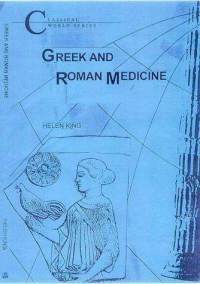 I don’t know how you cope with deadlines: I am a lapsed perfectionist, so I’ve learned just to watch them sailing by. Some are real, some are imaginary. Telling the difference can be a challenge. Sometimes I’ve worked flat out to meet one, only to find that none of the other contributors to the project has bothered. Sometimes I’ve chosen to ignore one, only to get anguished messages from the editors of the project letting me know that I am the one person being sent to the Naughty Step.
I don’t know how you cope with deadlines: I am a lapsed perfectionist, so I’ve learned just to watch them sailing by. Some are real, some are imaginary. Telling the difference can be a challenge. Sometimes I’ve worked flat out to meet one, only to find that none of the other contributors to the project has bothered. Sometimes I’ve chosen to ignore one, only to get anguished messages from the editors of the project letting me know that I am the one person being sent to the Naughty Step.
So, Greek and Roman Medicine. I had a contract to do this little book for about 5 years before I actually wrote it. Deadlines sailed by into the sunset. The series editor was lovely about it. You may be wondering by now – what was it that galvanised me into action?
It was constipation. No, not my own. I was in the Netherlands at a wonderful place called the Netherlands Institute of Advanced Studies, where my target was to finish off another book, The Disease of Virgins. I had reorganised the entire plan of this and had decided to focus each chapter on a different explanation for this disorder. One of the chapters was on digestive causes and blockages. I thought to myself, ‘Surely someone somewhere has written a history of constipation? I really can’t get on with this book without some sort of overview of the topic!’ I googled, as you do, and found one. But it had only been published very recently. There wasn’t a copy in the Netherlands, in any of the libraries to which I had access. I’d need to buy one from the UK.
Problem: three week delivery time.
So what could I do? No point resuming another chapter – all the wrong questions were spinning round in my head. And then I remembered – the book I always ignored, the long-contracted Greek and Roman Medicine.
 Suddenly, it all made sense. I just sat down, and wrote. This was going to be an introductory book, so no footnotes to worry about. It was going to end with some questions the reader could ask herself, or the teacher could set for his students. It needed to summarise the state of play in scholarship on the subject, but in an accessible way. Two weeks later, I had a manuscript. And this is where things started to go very well indeed. At NIAS, I was part of a small theme group on Greek and Babylonian Medicine. So I gave my manuscript to everyone in it, and also to friends and to family. Everyone read it really quickly and got back to me with comments ranging from ‘This paragraph does not follow logically from that one’ to ‘You need more on…’ to ‘You need less on…’ I turned those around, and sent it off. Success.
Suddenly, it all made sense. I just sat down, and wrote. This was going to be an introductory book, so no footnotes to worry about. It was going to end with some questions the reader could ask herself, or the teacher could set for his students. It needed to summarise the state of play in scholarship on the subject, but in an accessible way. Two weeks later, I had a manuscript. And this is where things started to go very well indeed. At NIAS, I was part of a small theme group on Greek and Babylonian Medicine. So I gave my manuscript to everyone in it, and also to friends and to family. Everyone read it really quickly and got back to me with comments ranging from ‘This paragraph does not follow logically from that one’ to ‘You need more on…’ to ‘You need less on…’ I turned those around, and sent it off. Success.
And then my constipation problem was solved.
December 14, 2012
12 Days of Books: Subscribe and Get Another Chance to Win!
By Holly Tucker (Editor, W&M)
 Whether you’re a new reader or a die-hard Wonders & Marvels fan, WE NEED YOU to help us take our fancy new email subscription service through its paces.
Whether you’re a new reader or a die-hard Wonders & Marvels fan, WE NEED YOU to help us take our fancy new email subscription service through its paces.
We just decked out the email subscription options for the site. Now you can get automated feed updates via email at your choice of intervals (Monthly, Weekly, or Individual Posts).
You can also show your love for your favorite W&M contributors by subscribing to their personalized feed. You can get news about their latest books, behind-the-scenes updates on their research, or just a feed of their posts so you don’t miss a thing.
If you were a subscriber in the past, you’ll need to re-subscribe to our new feeds. But here’s a little motivation for everyone…
Subscribe between now at December 24 and you’ll be automatically entered into each of the “12 Days of Books” giveaways. Leave a comment for the giveaways that interest you most…and that makes double the chances of winning.
Have you seen the posts so far? We’ve got Adrienne Mayor’s book on Scorpion Bombs, Karen Abbott’s book on Chicago Madams, and my own book on the dark history of early medicine. A little bloodletting, anyone? And that’s just for starters, we still have 9 more to go!
On behalf of everyone here, THANK YOU SO MUCH for your continued support. This site is truly a labor of love, and it’s a delight to know that others share in our fascination for the past.
Warm wishes for a lovely holiday season!
All my best,
Holly

